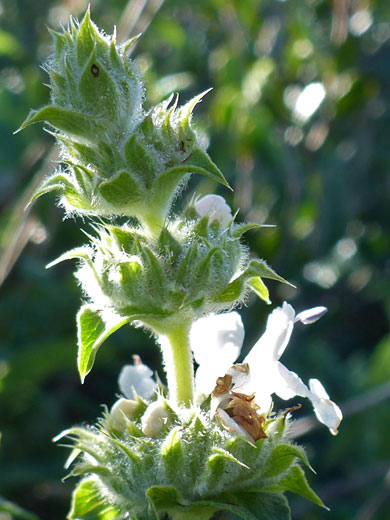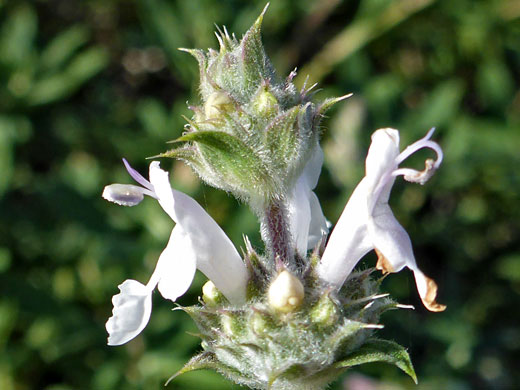Common name:
Black sage
Family:
Scientific name:
Salvia mellifera
Main flower color:
Range:
South and central California
Height:
Up to 6 feet
Habitat:
Coastal scrub, chaparral, hillsides; up to 3,500 feet
Leaves:
Oblong to obovate, up to 3 inches long, hairless above, sparsely hairy below
Season:
February to June
Salvia mellifera is a species of south and central California, occurring in a broad band along the coast from San Diego to San Francisco, and 50 or more miles inland. The common name of black sage refers to the sometimes dark appearance of the leaves, stems and bracts, most apparent during prolonged dry periods. Stems, sepals and bracts have a covering of spreading white hairs, some of which are glandular. Leaves are bright green, shiny and hairless on the upper surface, with a wrinkled venation pattern; undersurfaces are duller, and finely hairy.
Flowers are in whorled clusters at the leaf nodes, subtended by spine-tipped bracts. Calyces are similar in size to the bracts; they have two lips, the upper shallowly divided into three small lobes. The white to pale lavender corolla is longer than the calyx; it has a two-lobed upper lip and three-lobed lower lip. The style and the two stamens are slightly exserted.
Flowers are in whorled clusters at the leaf nodes, subtended by spine-tipped bracts. Calyces are similar in size to the bracts; they have two lips, the upper shallowly divided into three small lobes. The white to pale lavender corolla is longer than the calyx; it has a two-lobed upper lip and three-lobed lower lip. The style and the two stamens are slightly exserted.
All Contents © Copyright The American Southwest | Comments and Questions | Contribute | Site Map





